Showing Spotlights 169 - 176 of 624 in category All (newest first):
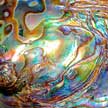 The remarkable properties of some natural materials have motivated many researchers to synthesize biomimetic nanocomposites and other nanostructured materials that attempt to reproduce Nature's achievements. Recent research has indicated that the amplification of natural materials' mechanical properties far beyond those of the components that comprise them originates mainly from: 1) a hierarchical micro-/nanoscale architecture and 2) abundant effective interface interactions. A new progress report provides insight into the development of bio-inspired structural materials.
The remarkable properties of some natural materials have motivated many researchers to synthesize biomimetic nanocomposites and other nanostructured materials that attempt to reproduce Nature's achievements. Recent research has indicated that the amplification of natural materials' mechanical properties far beyond those of the components that comprise them originates mainly from: 1) a hierarchical micro-/nanoscale architecture and 2) abundant effective interface interactions. A new progress report provides insight into the development of bio-inspired structural materials.
Nov 10th, 2017
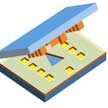 Researchers demonstrate a novel assembly technique for transforming traditional state-of-the-art complementary metal oxide semiconductor (CMOS) based integrated circuits (IC) and other electronic components into LEGO-like modules by providing unique geometrical identity to each module; and assembling these 'LEGO IC' without the need for bonding or soldering but with the highest yield, accuracy and throughput required to maintain a high system performance.
Researchers demonstrate a novel assembly technique for transforming traditional state-of-the-art complementary metal oxide semiconductor (CMOS) based integrated circuits (IC) and other electronic components into LEGO-like modules by providing unique geometrical identity to each module; and assembling these 'LEGO IC' without the need for bonding or soldering but with the highest yield, accuracy and throughput required to maintain a high system performance.
Oct 25th, 2017
 Precise and reproducible manipulation of synthetic and biological microscale objects in complex environments is essential for many practical biochip and microfluidic applications. A new technique that offers simple, non-specific and long-lasting operation has been developed in form of an ultrasound-based method to guide microparticles in an autonomous and reproducible fashion, along with engineered topographical features - something like an automated highway system for microparticles.
Precise and reproducible manipulation of synthetic and biological microscale objects in complex environments is essential for many practical biochip and microfluidic applications. A new technique that offers simple, non-specific and long-lasting operation has been developed in form of an ultrasound-based method to guide microparticles in an autonomous and reproducible fashion, along with engineered topographical features - something like an automated highway system for microparticles.
Oct 20th, 2017
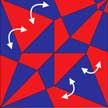 Just like traditional paper origami that results in complicated 3D structures from 2D paper, graphene origami allows the design and fabrication of carbon nanostructures that are not naturally existing but of desirable properties. In a new report, researchers describe how p-type and n-type doping of 2D sheets like graphene in selected areas could be exploited as two 'colors' to guide the sheets into preferred folded shapes where complementarily doped areas maximize their mutual overlap.
Just like traditional paper origami that results in complicated 3D structures from 2D paper, graphene origami allows the design and fabrication of carbon nanostructures that are not naturally existing but of desirable properties. In a new report, researchers describe how p-type and n-type doping of 2D sheets like graphene in selected areas could be exploited as two 'colors' to guide the sheets into preferred folded shapes where complementarily doped areas maximize their mutual overlap.
Oct 6th, 2017
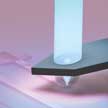 Among the important parameters in optical lithography is the spatial resolution you can get and the time you need to draw your pattern. Systems with regular and fixed patterns can be extremely fast but those systems are based on masks. Mask production is a time consuming and expensive process. So-called mask-less systems can draw unorganized patterns directly on substrates, at the cost of longer process times. Researchers now have presented a new lithographic approach with a high-resolution, low-cost technique based on nanosphere lithography.
Among the important parameters in optical lithography is the spatial resolution you can get and the time you need to draw your pattern. Systems with regular and fixed patterns can be extremely fast but those systems are based on masks. Mask production is a time consuming and expensive process. So-called mask-less systems can draw unorganized patterns directly on substrates, at the cost of longer process times. Researchers now have presented a new lithographic approach with a high-resolution, low-cost technique based on nanosphere lithography.
Oct 4th, 2017
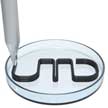 Researchers have focused on nanocellulose as a novel biomaterial with industrial and scientific applications, which range from the creation of new kinds of commercially useful materials and uses in medical technology all the way to the food and pharmaceutical industries. Engineers now have developed a new use for nanofibrillated cellulose by combining it with carbon nanotubes to form strong, conductive microfibers through a 3D-printing process. The team's 3D-printed wood nanocellulose-carbon nanotube microfibers combine high electrical conductivity and mechanical strength, which can be potentially used in wearable electronics with high performance and low cost.
Researchers have focused on nanocellulose as a novel biomaterial with industrial and scientific applications, which range from the creation of new kinds of commercially useful materials and uses in medical technology all the way to the food and pharmaceutical industries. Engineers now have developed a new use for nanofibrillated cellulose by combining it with carbon nanotubes to form strong, conductive microfibers through a 3D-printing process. The team's 3D-printed wood nanocellulose-carbon nanotube microfibers combine high electrical conductivity and mechanical strength, which can be potentially used in wearable electronics with high performance and low cost.
Sep 25th, 2017
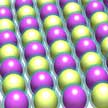 Researchers have developed various assembly approaches, including self-assembly and electric/magnetic field directed assembly, to build diverse colloidal matters. These techniques feature high throughput but with limited structural configurations. Specifically, some of the techniques highly rely on the physical performance of the colloidal particles. In new work, researchers have developed a versatile colloidal assembly strategy - termed opto-thermophoretic assembly (OTA) - to build artificial colloidal matter in a wide range of colloidal materials, sizes, and shape.
Researchers have developed various assembly approaches, including self-assembly and electric/magnetic field directed assembly, to build diverse colloidal matters. These techniques feature high throughput but with limited structural configurations. Specifically, some of the techniques highly rely on the physical performance of the colloidal particles. In new work, researchers have developed a versatile colloidal assembly strategy - termed opto-thermophoretic assembly (OTA) - to build artificial colloidal matter in a wide range of colloidal materials, sizes, and shape.
Sep 11th, 2017
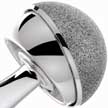 The implantation of orthopaedic devices is associated with a high risk of post-operative complications that increases substantially with each revision surgery. Researchers now have proposed a two-pronged strategy to address this outstanding clinical problem by combatting infections and providing bioactivity for titanium implants. Their nanostructured surfaces simultaneously are highly antimicrobial as well as bioactive - the goal of combining both functions without inducing cytotoxicity has thus far proved elusive.
The implantation of orthopaedic devices is associated with a high risk of post-operative complications that increases substantially with each revision surgery. Researchers now have proposed a two-pronged strategy to address this outstanding clinical problem by combatting infections and providing bioactivity for titanium implants. Their nanostructured surfaces simultaneously are highly antimicrobial as well as bioactive - the goal of combining both functions without inducing cytotoxicity has thus far proved elusive.
Sep 4th, 2017
 The remarkable properties of some natural materials have motivated many researchers to synthesize biomimetic nanocomposites and other nanostructured materials that attempt to reproduce Nature's achievements. Recent research has indicated that the amplification of natural materials' mechanical properties far beyond those of the components that comprise them originates mainly from: 1) a hierarchical micro-/nanoscale architecture and 2) abundant effective interface interactions. A new progress report provides insight into the development of bio-inspired structural materials.
The remarkable properties of some natural materials have motivated many researchers to synthesize biomimetic nanocomposites and other nanostructured materials that attempt to reproduce Nature's achievements. Recent research has indicated that the amplification of natural materials' mechanical properties far beyond those of the components that comprise them originates mainly from: 1) a hierarchical micro-/nanoscale architecture and 2) abundant effective interface interactions. A new progress report provides insight into the development of bio-inspired structural materials.
 Subscribe to our Nanotechnology Spotlight feed
Subscribe to our Nanotechnology Spotlight feed





